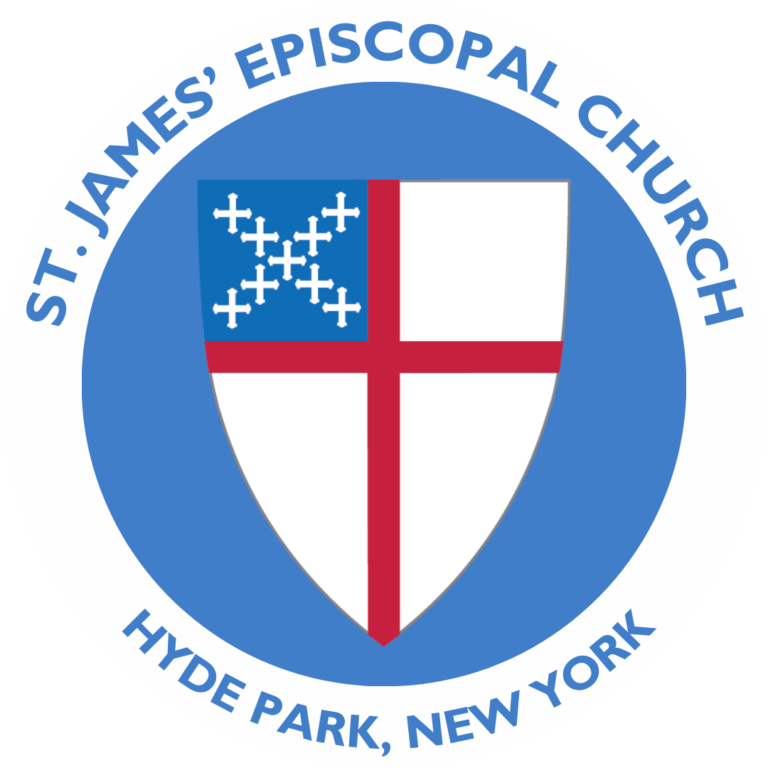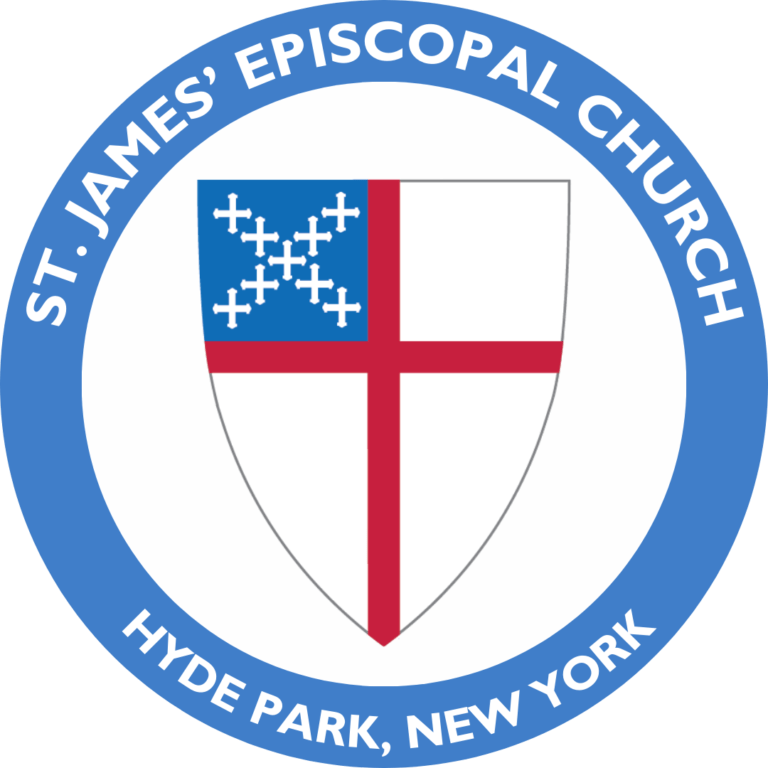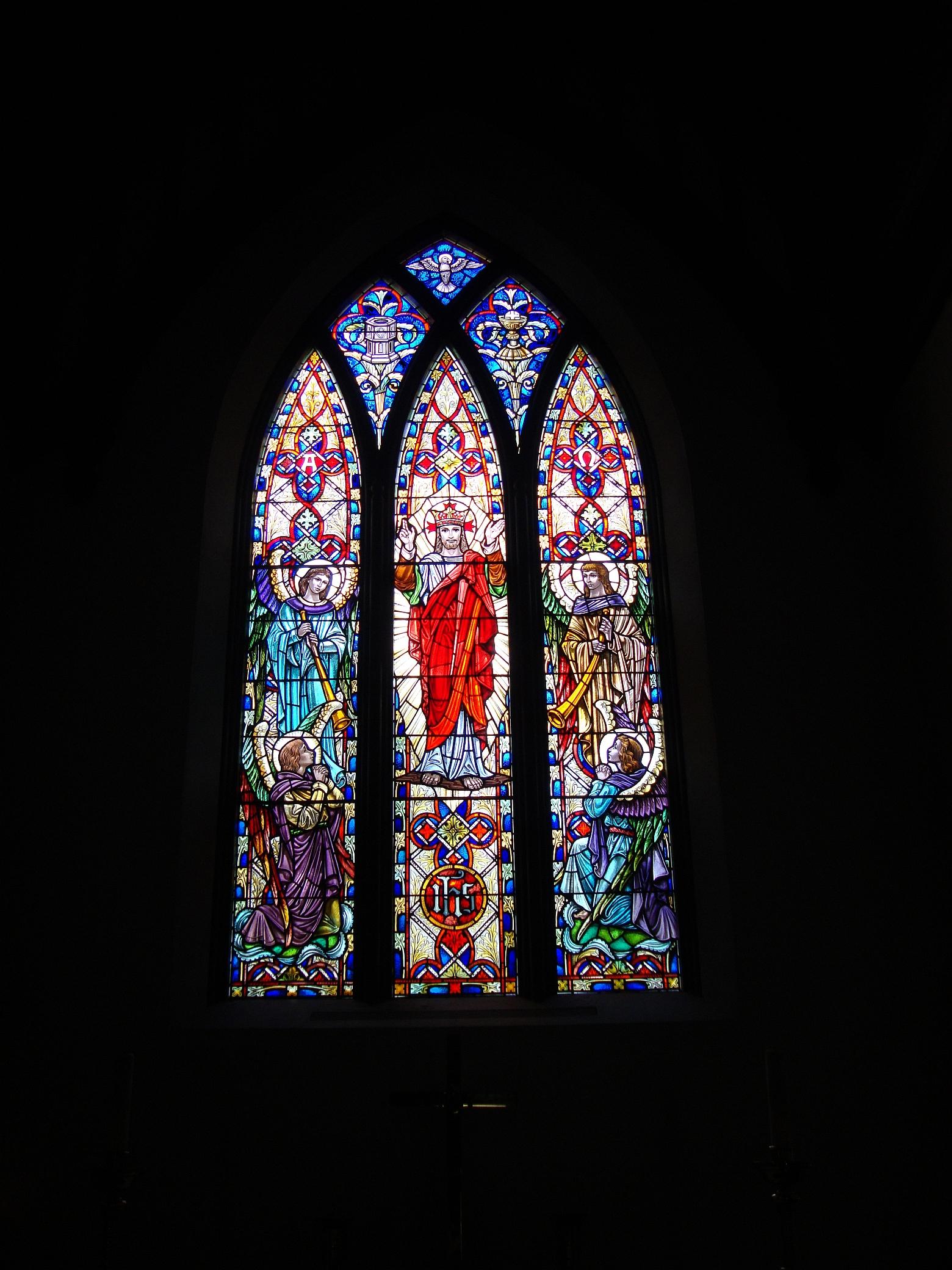
1. Christ in Glory: new window; was St. James the Just, but decision was made altar window should depict Christ.
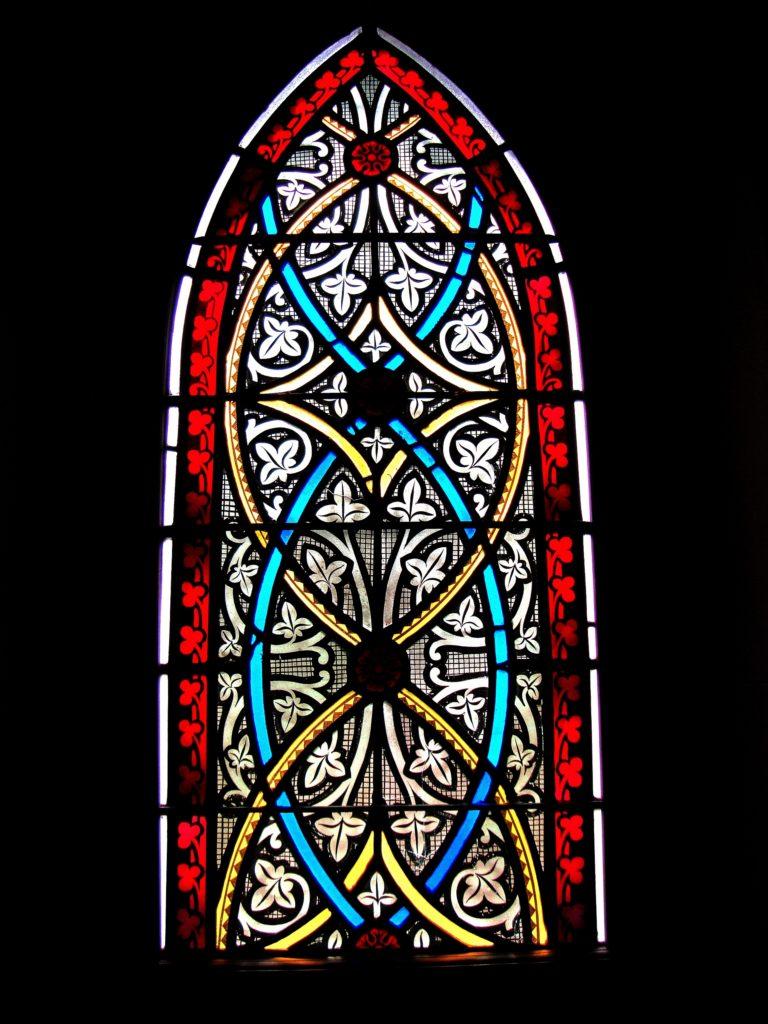
1a. the only original sanctuary window that survived the fire.
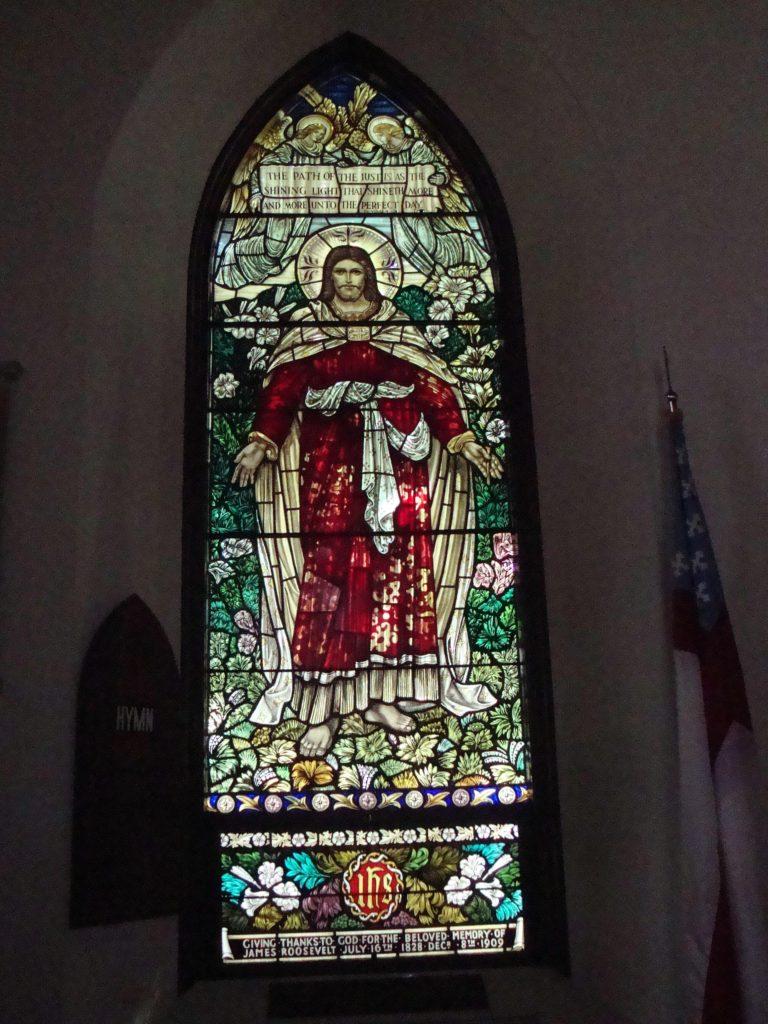
2. Come Unto Me, James Roosevelt Memorial Window: exact replica, moved from opposite side of nave to be near family plaques. James Roosevelt was the father of our 32nd President, Franklin Delano Roosevelt, and was a Senior Warden here. He is buried at St. James’. There’s a mistake in this window: can you find it?
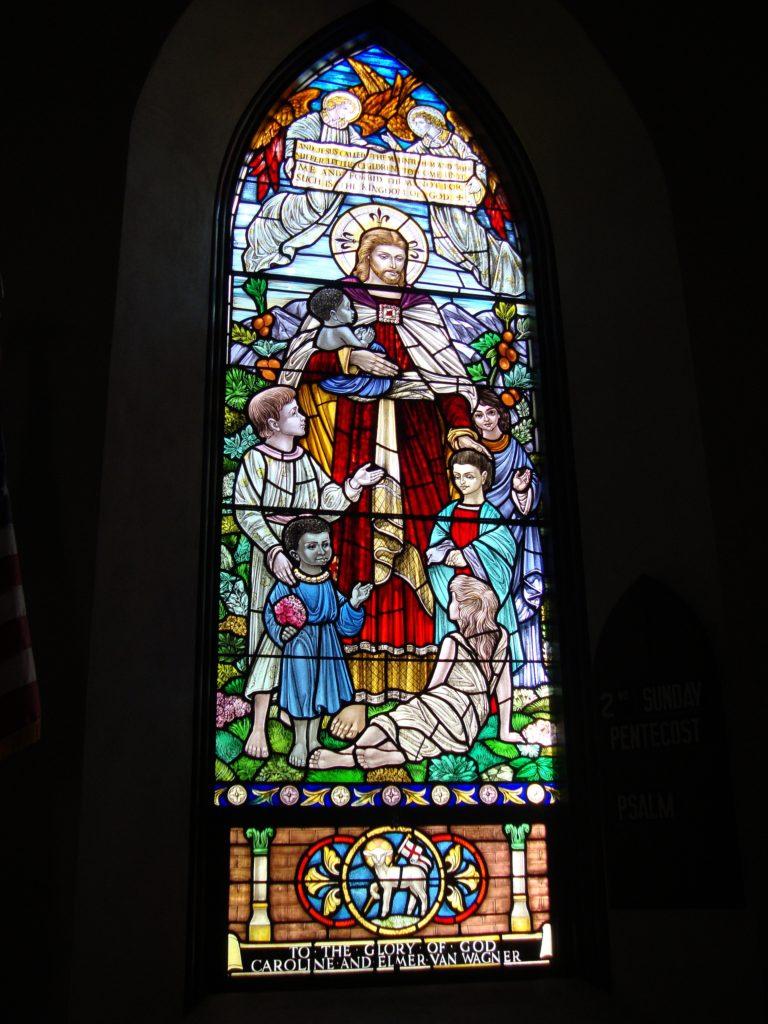
3. Christ Blessing the Children, Caroline and Elmer Van Wagner Memorial Window: new window designed to match #2 opposite, located symbolically next to the baptismal font.
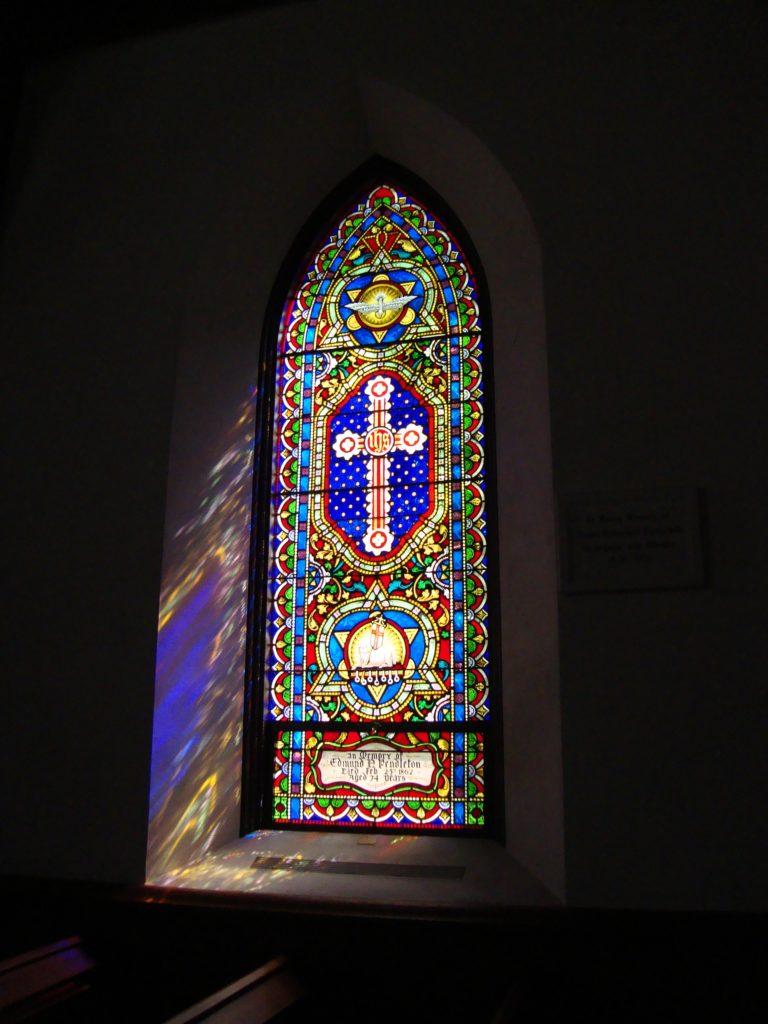
4. Trinity, Edmund Pendleton Memorial Window: exact replica, a symbolic treatment of the Trinity. Edmund Pendleton was a Dutchess County judge (1830-1840) and a U.S. Representative from New York (1831-1833). He is buried at St. James’.
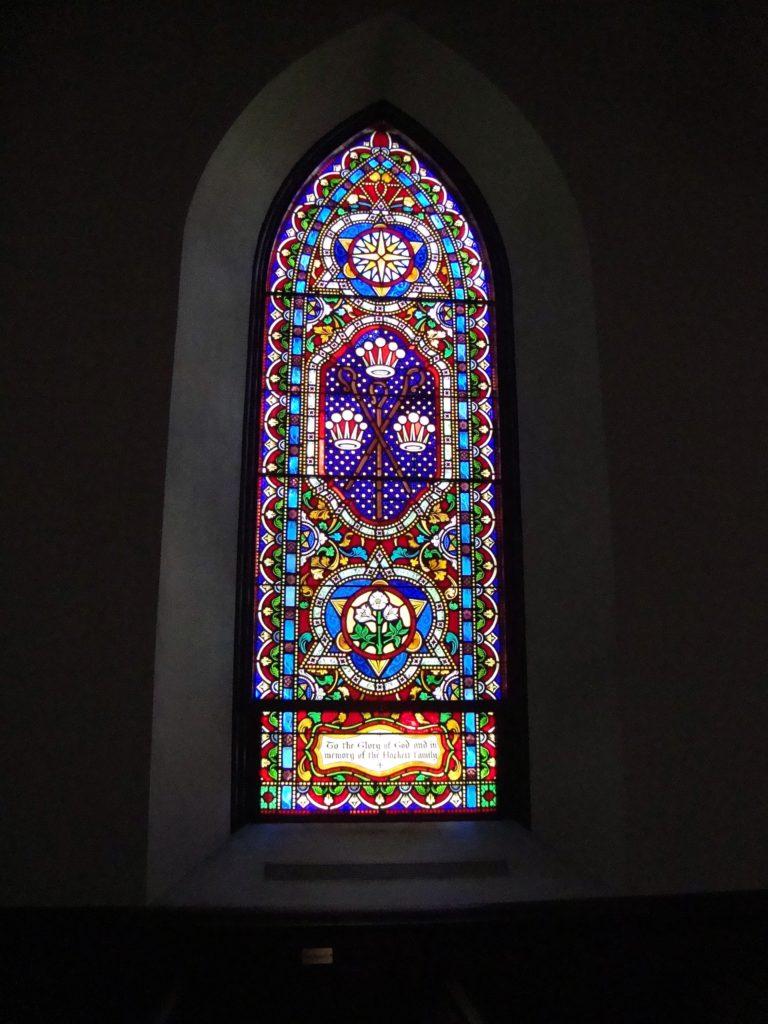
5. Nativity, Hackett Family Memorial Window: new window with a symbolic rendering of the Nativity, similar to #4 opposite.
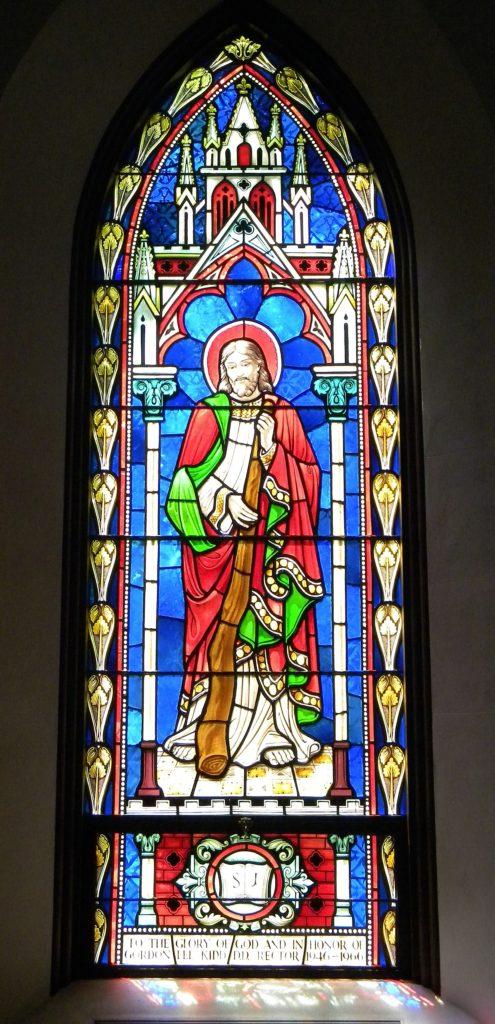
6. St. James “the Just”, Rev. Gordon Kidd Memorial Window: new window using the design of the St. James figure from the original altar window, enlarging the figure and making the club smaller. Rev. Kidd was the Rector of St. James’ from 1946 to 1966.
The church’s namesake, Saint James, is called “the Just” because of his righteousness and piety. He is depicted holding a fuller’s club, which was the instrument of his martyrdom. His feast day is October 23.
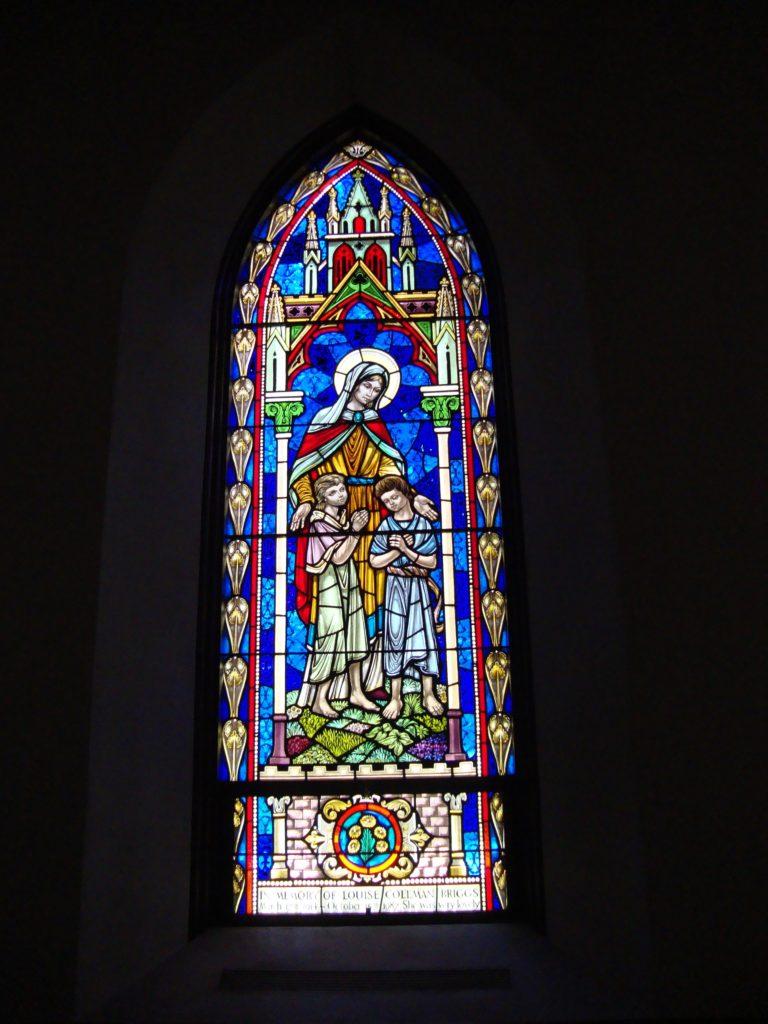
7. Louise Coleman Briggs Memorial Window: design modified by making figures larger and making the background similar to that of #6 opposite, with a new memorial inscription.
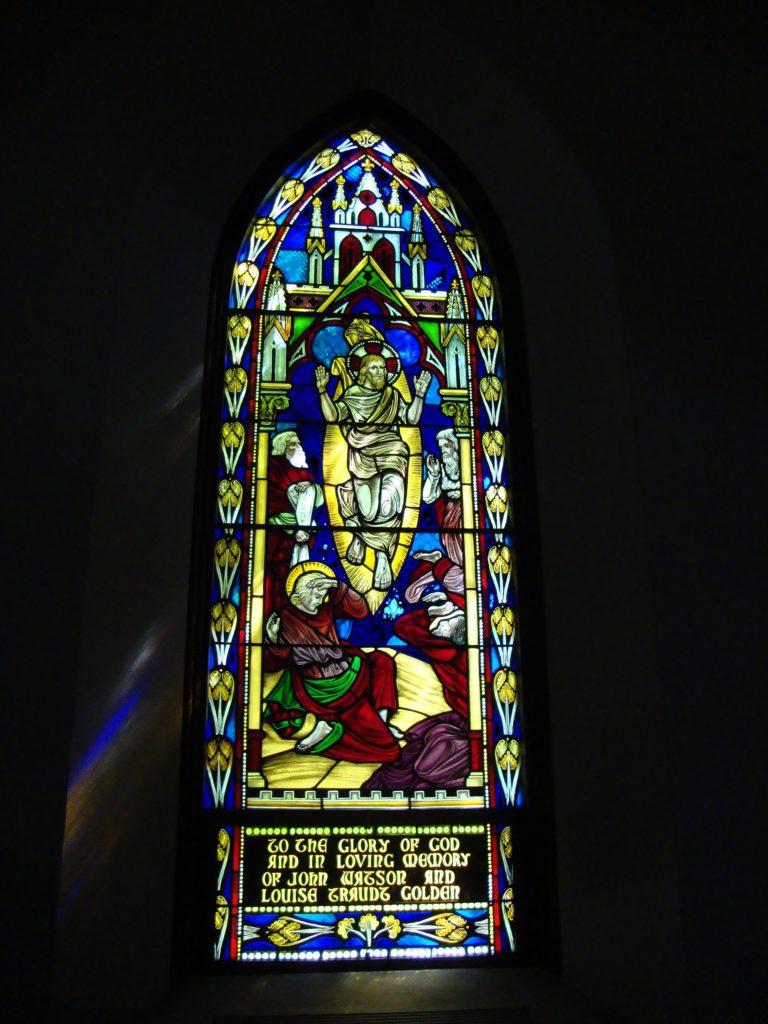
8. Transfiguration, John Watson & Louise Traudt Golden Memorial Window: replication of original design, the Transfiguration of Our Lord, with a new memorial inscription.
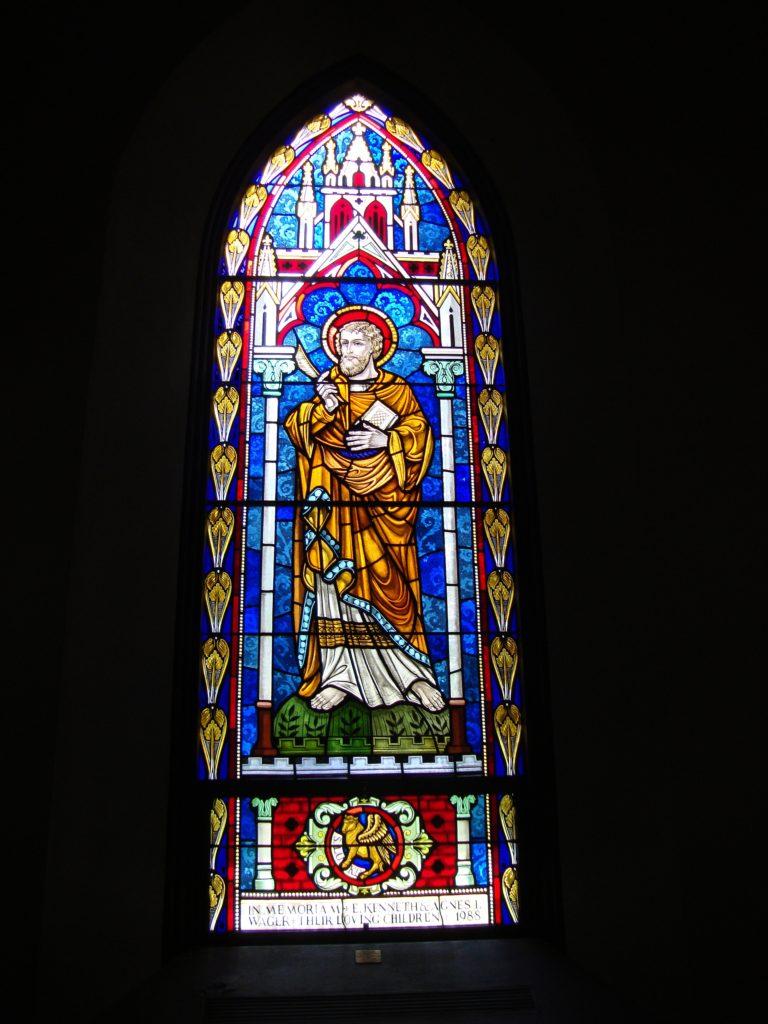
9. St. Luke, E. Kenneth & Agnes I Wager Memorial Window: replication of original design with a new memorial inscription.
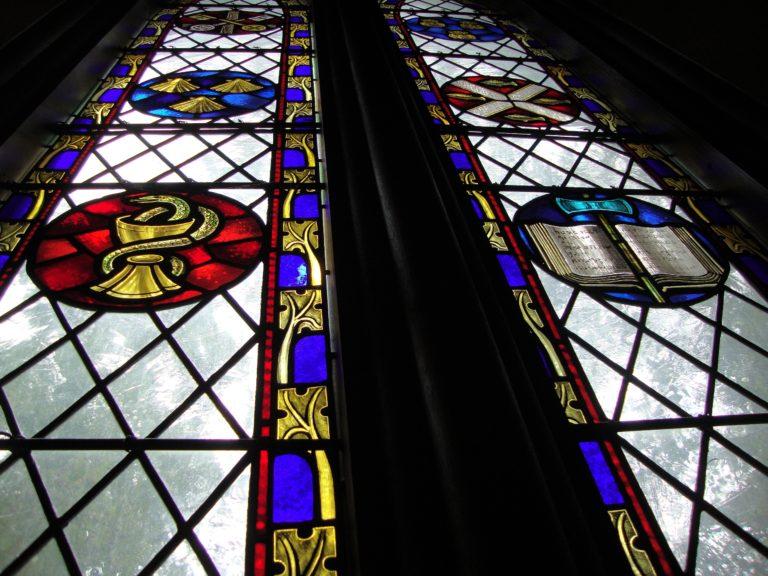
10. Henry T. Hackett Memorial Window: new window depicting symbols of the twelve Apostles. From top, left to right: St. Peter, St. Matthew, St. James the Greater, St. Andrew, St. John, and St. Mathias.
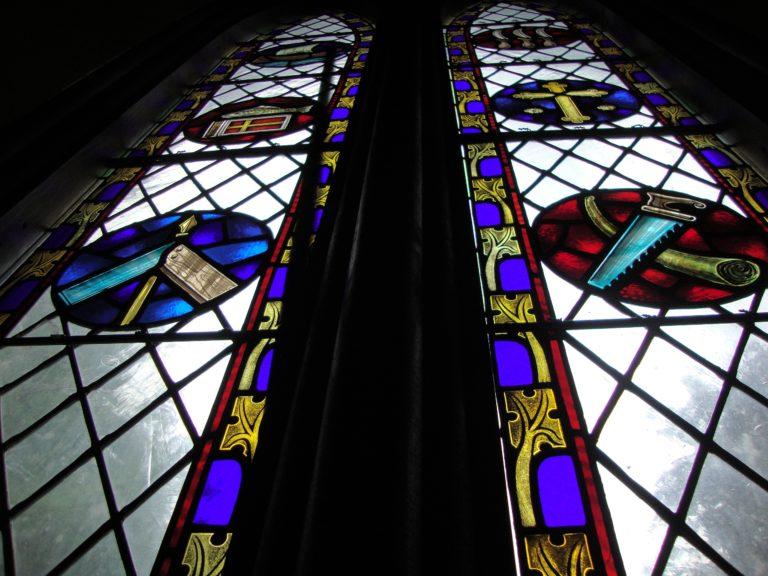
11. Ella M. Kopser Memorial Window: new window depicting symbols of the twelve Apostles. From top, left to right: St. Jude, St. Bartholomew, St. Simon, St. Philip, St. Thomas, and St. James the Lesser.
12. James and Genevieve Spratt Memorial Window: new window, a replica of the diamond-paned windows in the original 1811 church.
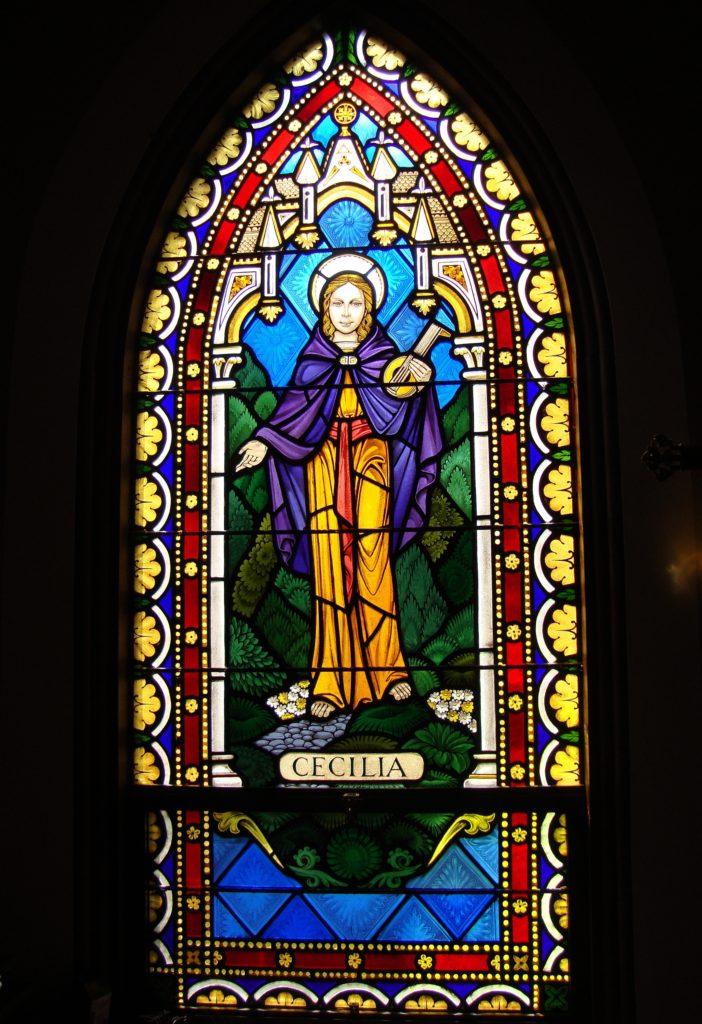
Sacristy: St. Cecilia, Patron Saint of musicians: new window.

The Stained-Glass Studio
The windows, which date from the mid-1980s to 1991, are the product of J&R Lamb Studios, located at the time in Philmont, New York but now based in Wyckoff, New Jersey. Founded in 1857 in New York City’s Greenwich Village by English brothers Joseph and Richard Lamb, the original focus of the business was the interior design of churches — mosaics, woodwork and metal work. But in the 1870s, Lamb extended its reach to include windows, in the process becoming one of the foremost developers of opalescent (semi-opaque) stained-glass and was chosen by the U.S. government as one of four studios to represent American achievements in stained glass at the Paris International Exposition of 1900.
Today, the organization, which predated the studios of both John LaFarge and Louis C. Tiffany, is the oldest continuously operating decorative arts facility in the United States. Over 15,000 new stained-glass windows and 8,000 restorations have been completed, many of which can be considered some of the most important artistic works in our nation’s history. J&R Lamb Studios is approved for restoration work in the crafts of glass, wood and steel by the National Trust for Historic Preservation and is a member of the Stained-Glass Association of America. In 2007, the Library of Congress in Washington, DC formally recognized their long commitment to excellence through the acquisition of their archives.
Mr. Donald Samick, President of Lamb Studios, and some of his staff have made extensive study of the glass work in the medieval cathedrals of Europe. When asked to make a comparison of the quality of the ancient glass with that of the modern product, Mr. Samick pointed out there was a great variation in quality level of the old glass. This is probably due to several reasons, but over-riding was the problems of travel and communication, which placed severe restrictions upon the free and easy interchange of technology and methods. In addition, the old cathedrals were in construction for so many years the crafts were taken over by generations of artisans.
Mr. Samick places the best quality ancient glass and modern glass on a par. However, only time will prove if the advances in the technology, chemistry, and glass making will result in a more durable product.
In modern windows, depending on the quality of the lead, the window’s structural design and the method of installation, restoration is required every 90 to 100 years; $30,000 to $50,000 will refurbish a 5-by-20-foot window. “The glass itself will last forever,” said Mr. Samick. “It’s made of silica, so it’s impervious.” Not so the lead, which is gradually weakened by oxidation, moisture and heat.
The Restoration
As a congregation, St. James’ Church dates to 1811, but this church building dates to 1844 (the original church was dismantled in 1844 because of structural problems). In June of 1984 the church was extensively damaged by fire, and all but one of the stained-glass windows were destroyed.
During the restoration of St. James’, the overall objective was to replace all elements exactly as they had been prior to the fire. However, in some features it was deemed necessary and/or desirable to make some changes. The stained-glass windows are a prime example of this.
Mr. Samick presented to the stained-glass restoration committee three alternative plans for consideration:
- All new designs following the chronological life of Jesus with the altar window portraying Christ in Glory.
- Keep the original designs but rearrange their locations.
- A combination of #1 and #2, which was the plan chosen.
While some windows are exact replicas of the original design, others were slightly modified, and in a few cases, for various reasons, an entirely new window was designed. Only two of the memorial inscriptions from the 1844 church were carried over to the restored windows; the others are new memorials. Some windows were moved in keeping with Lamb Studios’ recommendation that similar windows be placed opposite each other.
All of the windows are in the 1840-1860 style to maintain a unity of design, and the same color palette was used. The effect is very different from the church before the fire, where the memorial windows were added over a span of 90 years (the earliest being 1850 and the last being 1942), therefore reflecting many different styles. Using the same style for all the windows also kept the cost of the project lower.
The artist, Roy Coomber, was a Welshman from Bristol, England whose career began in the 1940s with a 7-yr. apprenticeship fixing and repairing stained glass windows damaged in England during the war. He passed away in 2016.
The process of putting a window together involved Mr. Coomber selecting the glass pieces, then painting and firing them, after which they were shipped from England to Lamb Studios in New York for leading. Only one window was done at a time, and each took 4-9 months from design to completion. The prices ranged from app. $8000 to $14000 per window.
